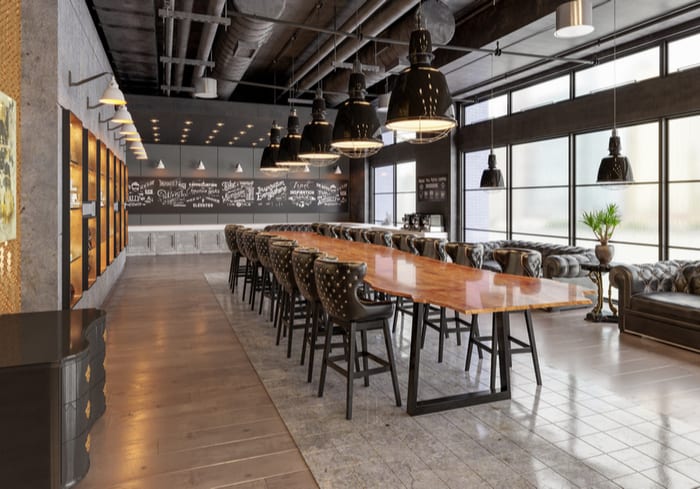The Mall Food Court’s Hall Transformation

Mall developer James Rouse was known for many innovations, but his best known might have arguably been the food court. In hopes of having shoppers stay longer at his malls, he created a food court at the Plymouth Meeting Mall in Pennsylvania in 1971. The effort was stymied by its lack of selections and its small size. But, in 1974, he opened a successful food court in New Jersey at the Paramus Park Mall. Rouse’s communications director, Robert Rubenkonig, said in a 2004 Shopping Centers Today story that the developer sought to create “community picnics” with the concept. “They’re open areas — a great idea that stuck,” he said.
In the present day, food courts have come to be associated with large chain restaurants such as Sbarro, Auntie Annie’s and Panda Express, among others. One Washington Post reporter remarked in September, “The pretzel-and-Cinnabon lineup was expressly designed for shoppers to carbo-load while resting their feet — sustenance to keep them shopping.” But, over time, the concept of an open space dedicated to different vendors has seemed to evolve into food halls. The new food halls, however, feature differentiated offerings with more of a geographical focus. The Ballston Quarter shopping mall, for instance, will have a 25,000 square feet of space “mostly dedicated to local vendors” that has been described as a food hall.
At the Empire Stores complex in Brooklyn, the Time Out Market New York is set to open in 2019. The space, like that at Ballston Quarter, is set to have a local focus — with outposts of New York City restaurants like Clinton St. Baking Co. & Restaurant, Mermaid Oyster Bar and Jacob’s Pickles. For these kinds of restaurants, the business structure of food halls can be appealing. While asking rents for ground-floor spaces in New York City can run from $1,000 to $3,000 per square foot each year, The Wall Street Journal reported that “rents at food halls can be a fraction of that.” The paper also noted that those rents are many times built off a percentage of sales. As a result, restaurants don’t end up paying high rent if business dries up.
New York’s dell’anima restaurant, in one case, is making the move from a Greenwich Village location to a space in the Gotham West Market. The eatery, which has been in the neighborhood for over 10 years, experienced a significant rent hike in 2018. As a result, the restaurant decided to choose the food hall route. Discussing the move, dell’anima Co-Founder and Managing Partner August Cardona told WSJ, “The economics make a lot of sense. Why not?” The paper, however, noted that some established restaurants, are also opening additional stores in food halls. Food halls, then, don’t serve only as a replacement for a brick-and-mortar location — they can supplement a restaurant’s existing locations, too.
The Future Of Food Halls
The number of food halls is set to rise: There were only 25 American food halls in 2010, per the Post. According to research that circulated in 2017, there are expected to be 200 food halls in the U.S. by 2020. That was double the number reported at the time. It was also said that Eataly had 35 locations and plans for several additional food halls in the coming years. As it stands, the chain has locations in cities such as Boston, New York and Los Angeles, among others.
The move comes as, in the spirit of Rouse, shopping centers are becoming social arenas where shoppers can eat, drink, socialize and shop. Michael Conway, a vice president for real estate firm Phillips Edison & Company said last year, “There’s a good chance that the shopping center as we know it will look completely different 10 years from now.” He added, “We all have to continue to adapt; when you have an innovative mind-set new ideas come to light.”
And, in a way, shopping centers are coming full-circle by borrowing on the history of food court when building the food halls of the future. Sometimes in business, as it is in life, what’s old is new again.